S’up bru! Andy’s back to let you know what happened next.
So Emma left you after a lovely time in Dunedin, it had brought back great memories of a trip to Edinburgh and ticked another brewery tour off of our list. The next part of the story continues with our drive along the Southern Scenic Route through an area known as the Catlins on the far south-east coast of the south island. This is a great drive with lots of pretty things to stop off and see along the way. Our first stop was Nugget Point, about 6km off the main road along one of NZ’s very van unfriendly unsealed roads, basically a gravel path with very often a corrugated surface. We felt every kilometre as we shuddered down the road with plumes of dust flying up behind us and the racket of deck chairs and cooking equipment crashing about in the back of the van. I was hoping that the view would be worth the effort after the intense drive and as we walked out along the narrow peninsula of land we realised it certainly was. Metres beneath us were seals scrambling about on the rocks and playing in the long plumes of orange seaweed that were drifting in the waves. The sea was calm and the water that unmistakable NZ turquoise. At the end of the point was a lighthouse and from here you looked out onto the ‘nuggets’, about 5 huge rocks pocking out above the waves. We admired the view for twenty minutes, it was that good. The pictures in the gallery will give you some idea of how pretty this place was, we decided it was the highlight of the Catlins. As we turned back towards the van, cloud started to roll in making us realise how lucky we’d been to see Nugget Point in glorious sunshine. We were now very much in a land of changeable weather and we wondered for how much longer the sun would be out.
As we left the Catlins we entered Invercargill on NZ’s south coast. We’d been expecting a city lashed with harsh weather and dark skies, but Invercargill was being baked in sunshine. Driving through it we were reminded of the small non-tourist towns in Queensland back in Australia, except full of sheep! We weren’t too taken with the place, finding it to be a bit treeless for our liking and so didn’t spend long in the city itself. Instead we headed down to Bluff, often referred to as NZ’s southern-most point, which isn’t quite true but is near enough for us. I realised that this might just be the furthest south we’ll ever go in our lives and probably the farthest from home we’ll ever be! Bluff had clearly been a big industrial port in its day but was now a fairly rundown little town. It still had a charm about it with the ruins of the old oyster boats sat in the sheltered bay and remnants of old builings here and there. At Striling Point we visited the famous AA signpost showing the distances to some of the world’s biggest cities. There’s also a cool sculpture here representing the Maori story of how NZ came to be. Maui (a demigod) caught a huge fish which became the north island, in the fight his canoe capsized becoming the south island and the anchor of his boat became Stewart Island, NZ’s third and smallest island. A chain extends out to sea from Stirling point representing the anchor link, another rises from the sea onto Stewart Island. We went for a lovely walk here along the coastline through some native forest that was full of Tuis, Fantails and even Tom Tits, not the cockney rhyming slang version luckily, but the bird… not the turd 😉
Leaving Invercargill and Bluff we would now be heading to that one place that we’d been the most excited about seeing, NZ at its wildest and most isolated, Fiordland. As we drove west along the coast we stopped for lunch in a small bay and watched a father and son out on a kneelboard. There were no waves so we wondered why they were in the water and also why they were looking over the front of the board. We then saw the instantly recognisable dorsal fins of two Hector’s dolphins emerge just in front of them. For thirty minutes the dolphins swam around them, clearly very curious as to what they were doing. We’d paid a fortune back in Akaroa to see these rare dolphins whilst these two enjoyed a much closer and more personal experience for free! They didn’t have to make dicks of themselves by making noises through snorkels like lunatics either! It was pretty incredible to see, the water was only waist deep. We soon spotted another ten or so dolphins playing in the waves along this bay, quite a magical sight.
We continued our drive and turned inland, now heading north for the first time on the south island (we’d now completed the east coast and would be driving up the west). The land started to become more mountainous and increasingly forested, in striking contrast to where we’d just been. We soon entered the small town of Manapouri which is positioned on the side of a huge lake and found ourselves a spot for a few nights. It’s here that you can take a tour of Doubtful Sound, less touristed than the more famous Milford Sound as it’s far more remote. We’d opted to tour this one as it sounded more up our street. We booked ourselves onto the 8 and a half hour tour for the next day and couldn’t wait. It was here sat next to our van that we met NZ’s most irritating and nasty little native creature… the sandfly! These guys are like miniature blue bottles, slightly bigger than a fruit fly, fairly innocent looking little devils. They land on you and just like the dreaded c*nt fly back in Australia, pierce your skin quite painfully to try and get a drop of your blood. After two days the bite swells and becomes very itchy in a different sort of way to a mosquito bite, more fiery! We had them buzzing around us now and had to keep moving so they couldn’t land on us. For some reason they love the west coast of the south island, we’d been warned by countless other travelers of these little gits and finally were experiencing their delightful company ourselves. Luckily they are also incredibly daft, so as they start to bite, you can nearly always squish the bastard as they don’t fly away, still you’re left with the bite to deal with so the sandfly gets the last laugh.
Covered in DEET we walked down to the edge of lake Manapouri and instantly forgot about our pesky flying friends. Here by the waters edge it was like a film set. The forest floor was covered in soft round patches of moss with miniature bonsai-like trees growing out of it and lichen covered rocks were littered around. It felt like we were in fairlyland, I swear we hadn’t taken any hallucinogenics. Apparently this area was native beech forest, a very unique environment and not like anywhere else we’d been. We sat on the spongy forest floor and looked out over the beautiful crystal clear waters of lake Manapouri which was reflecting the image of the huge mountain in the distance. For the hundredth time in NZ, we were in paradise!
We were up at 6am the next day for our Doubtful Sound cruise and soon found ourselves heading out in a boat across beautiful lake Manapouri. The lake was formed by glaciers and is 400 metres deep, it is huge, holding an incomprehensible amount of water. To reach Doubtful Sound we still had to cross the lake, and then drive 22km through untouched forest. Back on the boat the sun was just starting to appear above the huge mountains that surrounded the lake, clearing the last few pieces of cloud in the sky. At the western end, known as the West Arm, we disembarked our boat and stood taking in the huge building next to us. This was the Manapouri hydroelectric power station. Where we were stood the place was quiet and tranquil, the water was still so we wondered how this feat of engineering was producing enough energy to power, as we were told, the huge Bluff Aluminium smelting works down on the south coast. As we were stood about with the rest of our group, our flying friends the sandflies appeared in force, causing us all to rush into the visitor’s centre. Our tour guides remained outside in their polo shirts and shorts completely unaffected by the little monsters, what’s their secret!? We were now waiting around for a coach to arrive that would be taking us down into the workings of this huge power station. Neither of us had been that fussed about this part of the trip, but soon found ourselves blown away by what we experienced.
After boarding the coach, our tour guide drove us into a narrow tunnel heading underground in a huge spiral. After 2km of driving we were 180 metres beneath where we were just stood, in a very dark and very claustrophobic man made cave. The air was wet and very cool and as our guide explained the process of digging this tunnel, the weight of rock above our heads was never far from our minds. Sixteen guys had died building this. We entered the turbine hall and were immediately hit by the heat and noise of the workings of the power station. The seven huge turbines lay beneath us in a vast hall. The water from the lake above falls through tubes driving the turbines, it then passes 22kms in tunnels underground before being released into Doubtful Sound, quite an incredible feat of engineering you have to agree. We were all only too happy to get back on our bus and head back out the way we came to the surface, the only problem was the driver had to now turn the bus around. In the tinniest amount of space he managed to complete a textbook three-point turn with the tunnel centimetres away from the top corners of the coach. We were soon winding back up towards the surface absolutely gobsmacked at what had just experienced.
We now drove the 22km Wilmott Pass, a road built solely for access to the power station, but now shared by two tourist coaches each day. The road is unsealed and passes through virgin land never touched by man. The trees on either side are ancient, wet and heavy with the mosses, airplants and vines blanketing them, you feel like you are in the land of the dinosaurs. In fact Steven Spielberg had intended to film Jurassic Park here, but after a month of solid rain abandoned the plan in favour of sunny Hawaii. We were again being treated to glorious sunshine in disbelief of our luck to be here on one of the very few dry days of the year. Just to put it into perspective, 16 metres of rain falls here a year! At the highest point of the road we were treated to our first glimpse of remote Doubtful Sound in the distance. The driver got us all off the bus and instructed us all to be quiet and stood still. For a minute we stood there without a man made noise to be heard, just those of the forest, incredible. We were soon down by the Sound itself boarding our boat for the three hour cruise. What followed was nature at its most wild and magnificent. With no other boats to be seen all day, we passed through the Sound in awe of the steeply rising mountains on either side of us. Waterfalls everywhere cascaded down hundreds of metres into the water and the odd rare Fiordland Crested penguin appeared on the surface wondering what a boat was. For the hundred and oneth time we were in paradise. We were told how the top few metres of water here are freshwater, entering the Sound from the waterfalls, rivers and the output of the power station. The freshwater has a brownish tint to it, making the water look a little like tea. The saltwater beneath doesn’t mix so you get these two distinct layers of water.
We passed a number of islands one of which was NZ’s largest predator free haven for native wildlife. This island was now home to the once thought extinct Takahe which the DOC is working hard to bring back from the brink. We then reached the opening of the Sound where it meets the Abel Tasman sea. Our boat took us up close to another colony of those furry seals we keep seeing, so we had a great view of several pups sat on the rocks. Due to the fine and calm weather our skipper was able to take us out into the sea a short distance, which was a very rare occurance we were told. We were now in roughly the same position as Captain Cook when he had named the Sound, due to the prevailing westerly wind he was ‘doubtful’ he’d get his ship back out, hence the name. We headed back in and were now treated to some closer views of the waterfalls cascading down the sheer cliff faces. We could only imagine what this place was like when it rained, apparently the waterfalls raged down everywhere. Sometimes they were even caught by the wind our guide told us, so they would be flowing up into the air. For a second I secretly wished I’d been here on one of those days, before remembering I wouldn’t have been able to sit out on deck like I was now, but would be behind steamy windows inside. Wow we were lucky! We were now heading back on ourselves and followed the same route we arrived, back to the dock, on the bus and then back across lake Manapouri. It had been an epic day and worth every cent as far as I was concerned. We’ve never experienced anything like this before and doubt we ever will again in our lives.
Thanks for reading and I hope you enjoy the gallery.
Andy
- The highlight of the Catlins.
- A weird halo around the sun, might be the hole in the ozone layer?? 🙂
- Check out the nuggets! A picture for our wall one day I think.
- Beautiful water full of long strands of seaweed.
- Look at this fur seal go!
- It’s a long way to most places from here!
- Maui’s anchor chain going out to sea.
- The story of how the islands came to be.
- A nice little bee.
- Father and son getting a very close encounter with a pair of Hector’s dolphins. Look for the black round fin.
- On the way to Manapouri, the mountains started to appear.
- The lovely fairyland forest beside lake Manapouri.
- A beautiful sunset.
- Emma enjoying the tranquility of the lake.
- A Cicada’s old skin it shed.
- A brown trout in the lake.
- Off on our Doubtful Sound trip.
- The low cloud over lake Manapouri was stunning and we weren’t anywhere near Doubtful Sound yet!.
- It was so quiet and serene here, you wouldn’t have believed the thing was working.
- Aaaaaahhhhhh! The bloody sandflies arrived!
- A nice Maori story about why the Sandflies were there.
- Our fellow tourists all scrambling to apply some repellent.
- Em boarding the bus that took us down into the workings of the power station. Note the sandfly-proof hood arrangement.
- Aaaahhhhhh!!!! We’re driving down a one way tunnel deep underground in pitch black!
- The turbines, this is where the magic happens.
- I love this photo, look at their helmets!
- A model of the workings of the power station.
- Beautiful trees absolutely covered in life.
- Our first view of Doubtful Sound.
- Out on Doubtful Sound.
- The Captain.
- Huge walls of rock rising from the water.
- Lovely scenery and a lovely lady.
- This shot’s for you Debbie.
- One of hundreds of waterfalls.
- The fur seal colony at the entrance to the Tasman sea.
- A lot of seals larking about in the seaweed.
- A nice shot of a tern.
- The Sydney Opera House.
- Some info on the possum problem here we found in a book onboard our boat.
- Possum = public enemy number 1.
- Emma admiring the view.
- Taking my 1000th picture of the day.
- A nice waterfall that you could safely drink from.



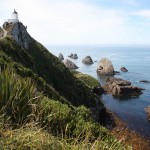
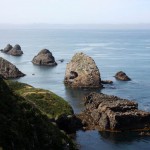
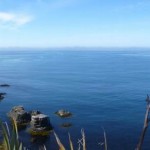
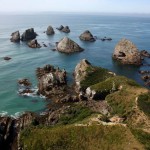
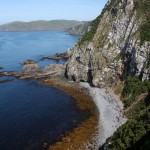
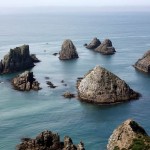
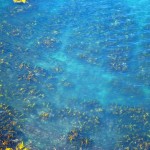
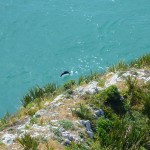
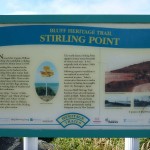
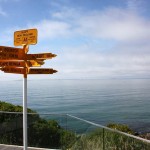
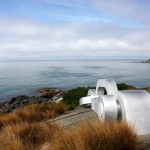

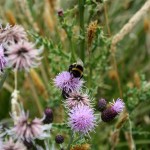
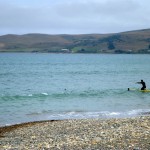

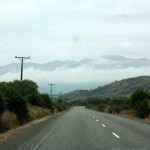
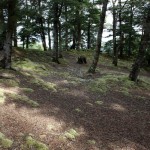
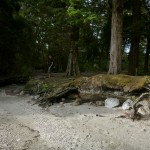
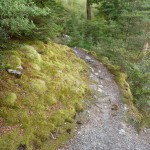
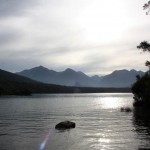
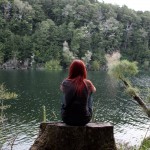
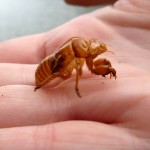
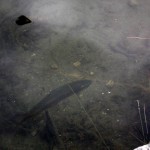
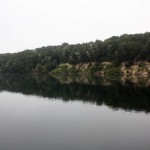
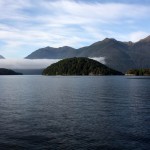
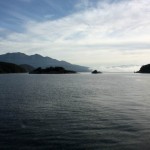
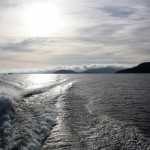
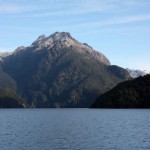
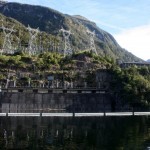
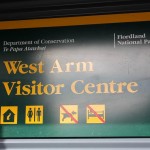
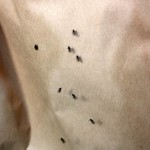
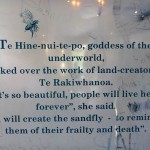
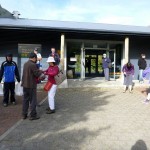
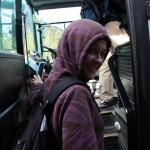
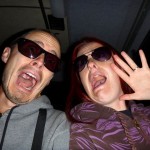

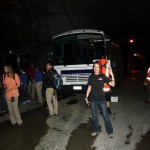
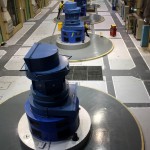
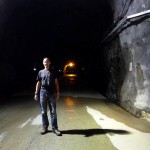
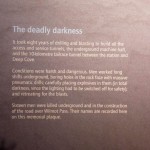
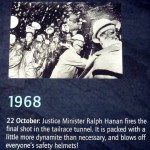
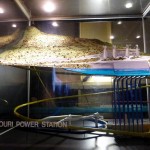
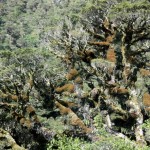
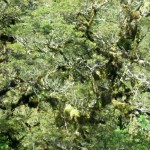
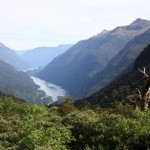
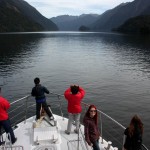
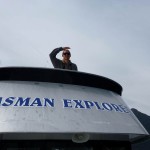
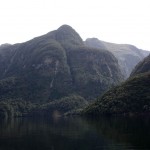
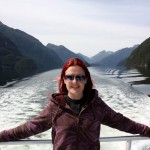
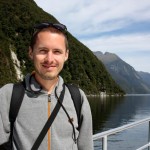
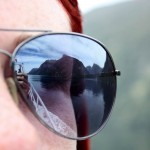
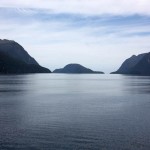
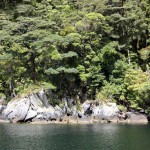
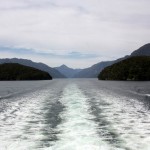
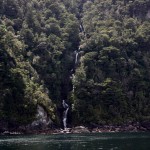
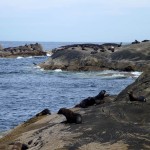
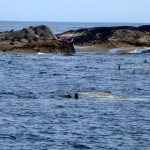
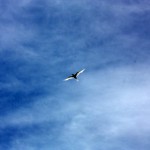
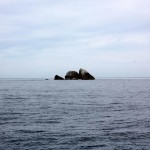
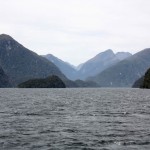
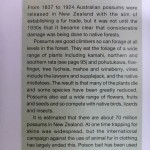
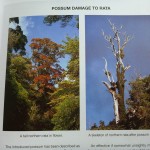
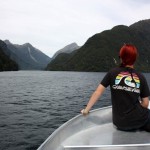
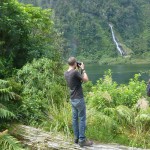
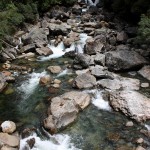
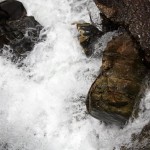
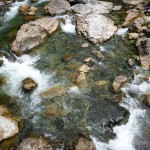
I’m glad that you enjoyed Doubtful Sound and I love the reflection in your sunnnies! I try to go to DS ever 2nd year when I’m on the South Island and it’s always a great trip. Keep travelling and good luck.
Hi Mark, thanks for your comment. We absolutely loved the place, Doubtful Sound is a very special spot in NZ!